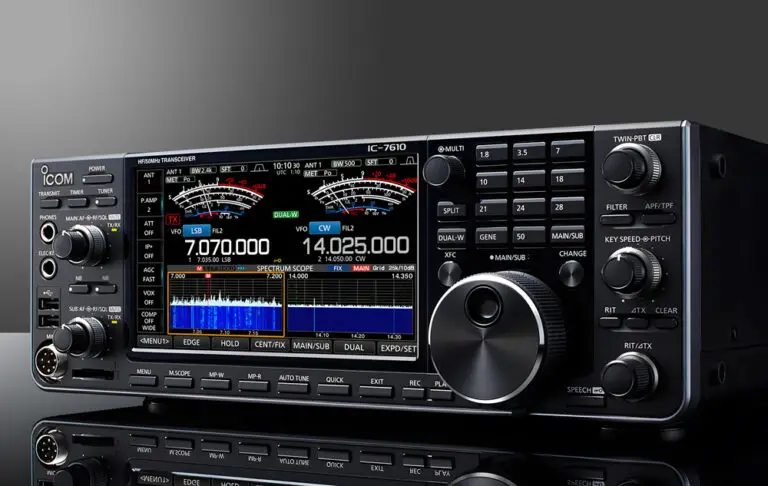

In stock
In stock
Please be aware these ATU’s are due to leave the factory during the last week of April 2024.
There are ten pieces available. These are a first come first served basis after being out of production for over two years.
LAMCO DU-1500T
The DU 1500 optimizes the performance of your antenna and transmitter or SWL receiver
By providing adjustable impedance matching.The DU 1500 also measures the Power and
Standing Wave Ratio (SWR),which allows you to tune the indicted SWR to the lowest possible ratio for the selected transmit frequency.
LAMCO DU-1500T
LAMCO DU-1500T
Meter…………………………Cross needle Power and SWR meter.
LAMCO DU-1500T
Input Tuning………………….Continuous rotation 4,5kV capacitor 330pF
Antenna Tuning………………Continuous rotation 4,5kV capacitor 330pF
Antenna Switch Selector………Five position ceramic switch:COAX 1, Tuned and
COAX 2 Tuned and BYPASS,COAX 1 DIRECT,
COAX 2 DIRECT
Power Range Switch…………..Two position: 200W/2kW
!!1.8MHz SWR wors then 1:3 MAX 800W!!
LAMCO DU-1500T
Coax 1……………………………SO-239 Teflon connector
Coax 2……………………………SO-239 Tflon connector
Balanced Line……………………Dual high voltage ceramic terminal
Include 4:1 balun
Frequency Coverage………………1.8-30MHz ,continuously tunable
Power Maximum…………………1500W max 2kW
Input impedance………………….50ohm
Output inoedance…………………25-600ohm and wire 2000ohm
Dimension…………………………H 330xW 330xD 120
Weight…………………………….10lbs.(4,5kg)
LAMCO DU-1500T
Continously adjustable input capacitor
LAMCO DU-1500T
LAMCO DU-1500T
Dual needle meter displays FORWARD and REFLECTED Power in Watts.
The SWR in measured where the two needles intersect on the red scale.
LAMCO DU-1500T
LAMCO DU-1500T
Continuously adjustable output capacitor.
Five-position rotary switch an output coaxial connector.
1.TUNED COAX 1 selects theCOAX 1connector trough the impedace matching
circuit.
2.TUNED COAX 2 selects the COAX 2 connector trough the impedance matching
circuit.
3.DIRECT BYPASS selects BYPASS COAX connector bypassing the impedanc
matching circuit but provinding SWR,FORWARD,and REFLECTED power
meter readings.
4.DIRECT COAX 1 select the COAX 1 connector bypassing the impedance
matching circuit but providingSWR,FORWARD, and REFLECTED meter
readings.
5.DIRECT COAX 2 selects the COAX 2 connector bypassing the impedance
matching circuit but providing SWR,FORWARD,and REFLECTED meter
readings.
impedance matching circuit.
Two-position switch selects the range (200W or 2kW) of FORWARD and
REFLECTED Power displayed ont he power meter.
When the METER ( power range) switch 200W the FORWARD meter
Scale reads 200W full scaleand the REFLECTED meter scalereads 40W
Full scale.
When the METER switch 2kW,the FORWARD meter scale reads 2kW
Full scale and the REFLECTED meter scale reads 400W full scale.
Coaxial connector for input from SWL receiver or transmitter.
2 COAX 1
Coaxial connector for output to Antenna One.
Coaxial connector for output to Antenna Two.
Coaxial connector for output to dummy load or third coax output.
Post/Wing-nut type ground connector.
6 BALANCED OUTPUT
Two ceramic post for output toRF balanced twin-lead antennas.
Select a location for the DU 1500 that allows the connectors to be free of any possible
Contact during operation.
the rear panel.Keep the cable as short as possible. If you use a linear amplifier,connect
your transmitter to the linear amplifier output to the DU 1500.
panel.Thes connectors are either direct from the transmitter or trough the tuned circuit
depending ont he setting of the OUTPUT SELECTOR switch ont he front panel.
lets you select the dummy load from the OUTPUT SELECTOR switch.Any antenna
that does not require the use o fan antenna tuner may be connected to the BYPASS
connector,if desired.
and POWER RANGE switches as outlined int he next section before applyng
transmitter power.(Tuning Section)
applyng transmitter power.Actual settings may vary from antenna to antenna.
position,select that position.
until the DU 1500 is tuned.
connection.To tune your antenna,the switch selection must be set to:COAX 1 TUNED
COAX 2 TUNED,or BAL.LINE+COAX 1.Selecting COAX 1 DIRECT,COAX 2
DIRECT, or BYPASS.
on your receiver.
FORWARD scale.Adjust the INPUT and OUTPUT controls for
a minimum REFLECTED reading while maintaining a FORWARD reading of 50-
100 watts using your transmitter power control.
8 until the lowest SWR reading is obtained. The SWR should be 2:1 or lower.
NOTE:This procedure takes patience the first time.The INPUT and OUTPUT
Controls vary the capacitors and provide fine adjustments.
An SWR or 1:1 is best,buta n SWR as high as 2:1 may be acceptable. Check
you transmitter manual for details.
or feedlines and retune.
Gives the highest FORWARD power reading.
Gives the lowest REFLECTED power reading.
Uses the largest capacitance (highest number) ont he TRANSMITTER and
ANTENNA controls.
procedure for each antenna.


